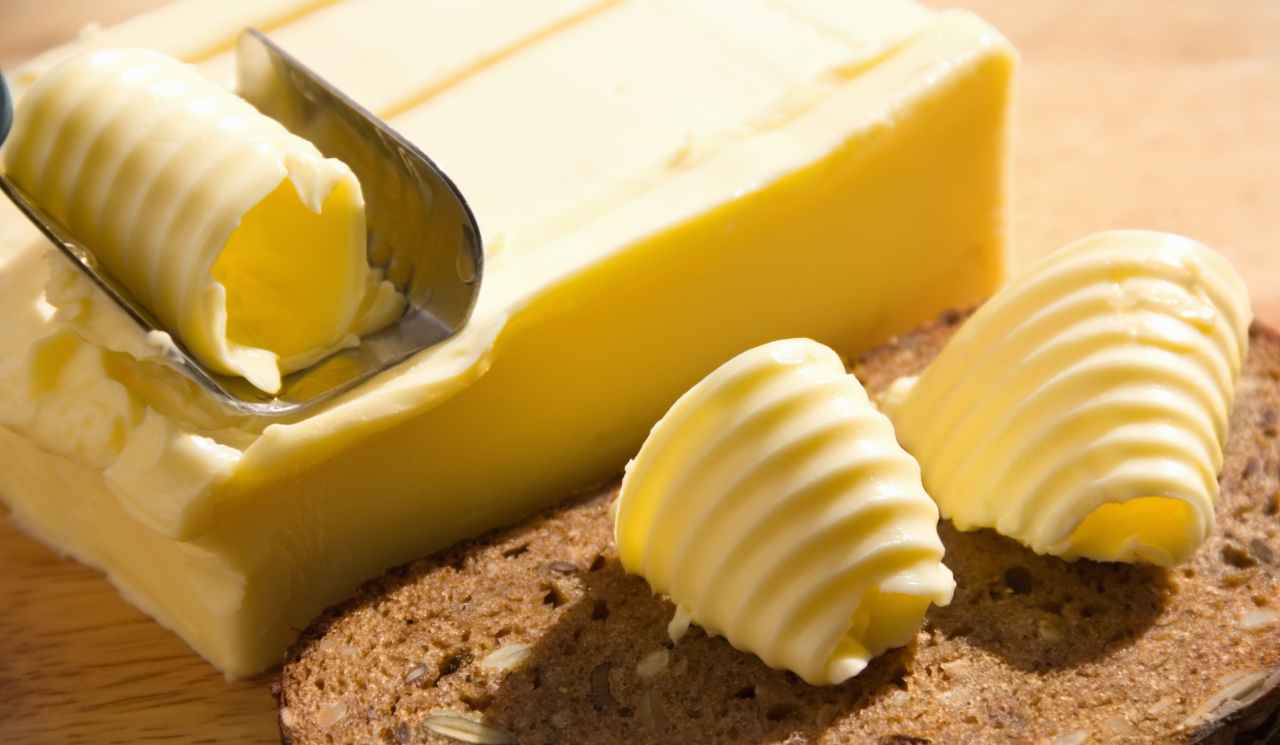Butter on a slice of bread has long been a staple in many Italian households. Whether paired with jam or sugar, or even enjoyed alone on a snack, butter has always had its place. However, with the recent demonization of fats, including butter, many people have been quick to eliminate it from their diets.
But is butter really as unhealthy as it’s made out to be? Let’s take a closer look.
Butter is made from separating cream from whole milk. It consists of about 80% fat, predominantly saturated fats, but also contains some monounsaturated and polyunsaturated fats, including omega-3 and omega-6 fatty acids. Additionally, 15% of butter is composed of water, and the remaining 5% is made up of proteins, carbohydrates, specifically lactose, and vitamins and minerals such as vitamins A, D, K, and E, potassium, phosphorus, and calcium. It also provides energy due to the fats it contains.
The quality and quantity of fats in butter can vary depending on the diet of the cows from which the milk is sourced. The more yellowish the butter, the higher the content of unsaturated fats, indicating a more natural feeding of the cows with fresh grass. On the other hand, a whiter butter color suggests an industrial product with a greater presence of saturated fats.
While excessive consumption of butter, like any food rich in saturated fats, may lead to increased levels of LDL cholesterol in the blood and an elevated risk of cardiovascular disease, moderate consumption can be part of a healthy diet. A portion of 10 grams of butter, for example, only covers about 5-10% of the total daily cholesterol requirement.
It is also essential to note that butter is a caloric food. A 10-gram serving provides approximately 70-80 calories. However, in comparison, 10 grams of extra virgin olive oil contain 90 calories. Surprisingly, this means that butter is actually less caloric than oil, which is 99.9% fat.
So, can we include butter in our diets? The answer is yes, but in moderation. Using butter sparingly and preferably raw can provide flavor enhancement to dishes without significantly increasing calorie intake. For example, using 10 grams of butter to season ricotta and spinach ravioli with sage and grated Parmesan can add a delicious touch.
In conclusion, butter on a slice of bread can still be enjoyed as part of a balanced diet. With its nutritional benefits, including vitamins, minerals, and good fats, butter can be incorporated sensibly without compromising overall health and wellness.
